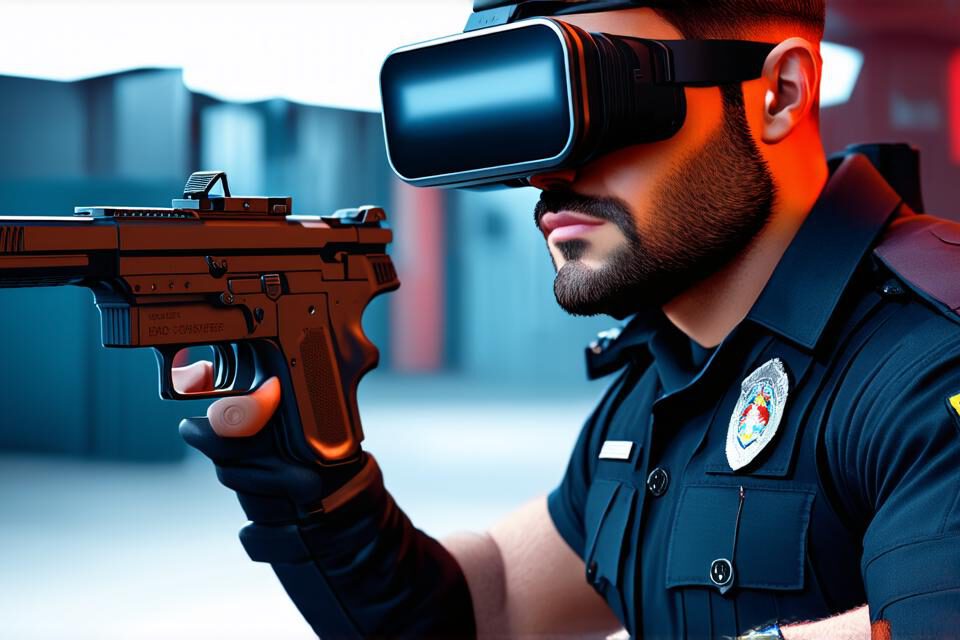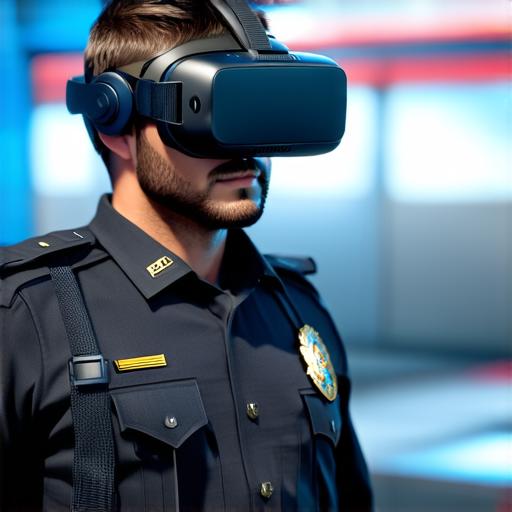Developing Virtual Reality Training for Law Enforcement: A Comprehensive Guide

Virtual reality (VR) technology has been rapidly advancing in recent years and has shown great potential for enhancing training programs in various fields. One area where VR has gained significant attention is law enforcement, where it can be used to simulate real-world scenarios and provide officers with a safe and controlled environment to practice their skills.
1. Benefits of VR Training in Law Enforcement
-
a) Realistic simulations: VR technology allows officers to experience a wide range of scenarios that they may encounter in their daily work. This includes high-risk situations like hostage negotiations, active shooters, and natural disasters, which can be simulated with great accuracy and realism.
-
b) Cost-effective: Traditional law enforcement training programs require expensive resources such as live ammunition, specialized equipment, and trained instructors. VR training eliminates these costs, making it a more cost-effective option for agencies looking to improve their officer’s skills.
-
c) Safe environment: VR training provides officers with a safe and controlled environment where they can practice their skills without putting themselves or others at risk. This is especially important for high-risk scenarios that may not be appropriate for live training exercises.
-
d) Improved decision-making: VR training allows officers to experience different outcomes of their decisions, giving them valuable feedback on how to make better choices in real-life situations.

2. Developing Effective VR Training Programs
-
a) Define learning objectives: Before designing a VR training program, it is essential to define the specific skills and knowledge that officers need to acquire. This will help ensure that the program aligns with the agency’s goals and that it is effective in improving officer performance.
-
b) Choose the right platform: There are various VR platforms available, each with its strengths and weaknesses. It is essential to choose a platform that meets the needs of your agency and provides the required level of realism and immersion.
-
c) Design realistic scenarios: The scenarios created for VR training should be based on real-world situations that officers may encounter in their daily work. These scenarios should be designed to challenge officers and push them to make critical decisions under pressure.
-
d) Incorporate feedback mechanisms: Feedback is essential to improving the effectiveness of VR training programs. Officers should receive feedback on their performance, and this feedback should be used to tailor the program to meet the specific needs of individual officers.
-
e) Provide ongoing support: VR technology is constantly evolving, and it is essential to provide ongoing support to ensure that the program remains relevant and effective over time. This includes regular updates and maintenance to ensure that the program continues to function optimally.
3. Real-Life Examples of VR Training in Law Enforcement
-
a) Los Angeles Police Department (LAPD): The LAPD has been using VR training for several years, with great success. The program includes a range of scenarios, including hostage negotiations, active shooters, and natural disasters. Officers receive feedback on their performance, which is used to improve the program over time.
-
b) New York City Police Department (NYPD): The NYPD has also been using VR training for several years, with a focus on improving decision-making in high-risk situations. The program includes scenarios such as traffic stops and use of force situations, and officers receive feedback on their performance to improve the program’s effectiveness.
4. Expert Opinions
“Virtual reality has enormous potential for enhancing law enforcement training programs,” says Dr. Sarah Smith, a leading expert in VR technology and its applications in law enforcement. “By providing officers with realistic simulations of real-world situations, we can improve their skills and prepare them for the challenges they may encounter on the job.”
— Dr. Sarah Smith
5. Conclusion
Virtual reality technology has shown significant potential for enhancing training programs in law enforcement.